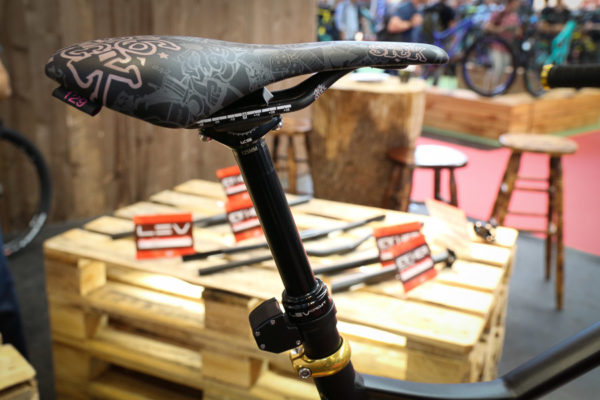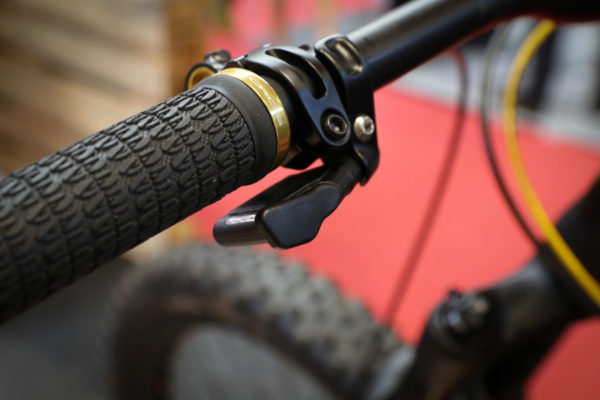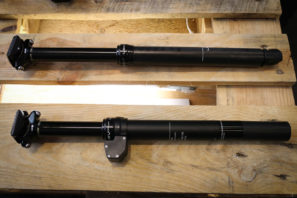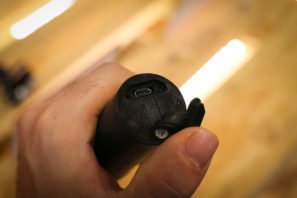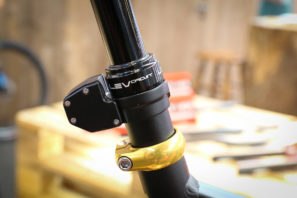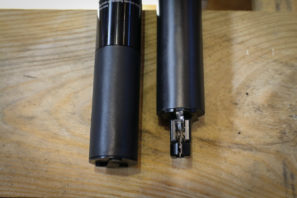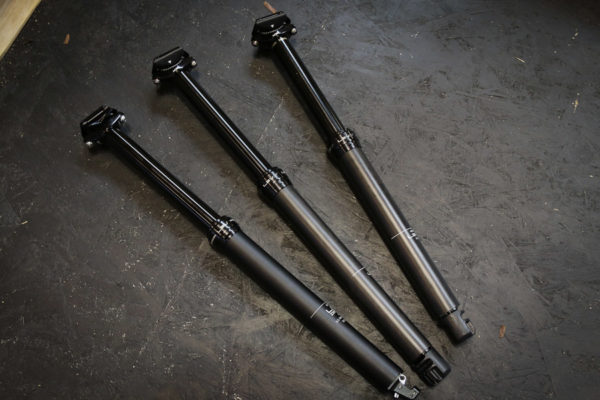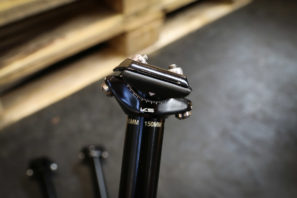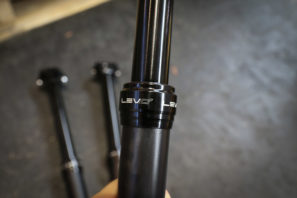Over the years of trade shows, we’ve been slowly seeing the KS electronic dropper come to life. With each step of the process KS has continually indicated that they were getting closer, but wanted to make sure they got it right before it got to market. Showing up to their booth, we were greeted with a very production looking dropper, which turns out to actually be heading to production soon…
When it comes to a bike company getting into the electronics game, according to KS one of the biggest hurdles is the quantities of parts needed. Compared to most electronics manufacturers, the numbers from the bike industry are quite small, so that limits the exact parts available to a small brand like KS. Because of that, certain things had to be built to accommodate certain components like the circuit board for the remote lever. Because the PCB is flat and square, the lever had to be built big enough to house it so the shape is wide and flat and fits well under the bar with out interference.
KS really wanted to maintain the feel and usability of their Southpaw lever so the switch has a large paddle that has a tactile feel. Since it uses the same clamping assembly as their Southpaw, it can be rotated and adjusted to fit your preferences. At the lever, it is powered by a coin cell battery which is about the only thing that would fit in the tiny body. But since the lever uses Bluetooth to connect to the post, the battery is said to last quite a while.
The batteries for the post are housed at the bottom and consist of two 3.7v cells for a total 7.4v system. The batteries were chosen for size, weight, and shipping considerations and are charged through a micro USB port at the bottom of the post. You will have to remove the post to charge it, but the design keeps the port out of the way and completely clean. KS expects around 600 cycles per charge with the included batteries. To save battery life the post has a sleep function and can be woken up with one press of the lever.
That box at the top of the post is the actuation motor, and the post itself uses the same hydraulic internals as the standard LEV. Compared to the standard LEV, the LEV Circuit is a bit longer thanks to the battery storage, and also has a bit taller stack height at the top thanks to the actuation motor mount. Above, (bottom, right, the two posts are positioned side by side to show the difference in lengths.
While KS still feels that the post could be improved even further, but at this point they are confident enough in the design to begin production in January. To us, the post felt great and had a much shorter delay between pressing the button on the lever and the post dropping or raising. The lever is also very well designed. To be offered in 100, 125, and 150mm lengths and 30.9 and 31.6mm diameters, KS expects the price to be below $600.
Perhaps just as exciting as the electronic dropper, KS is offering a few new LEV models including the lightweight LEV CI carbon. Using a carbon shaft as well as titanium hardware and a lightweight cable system, the post has a claimed weight of 430g for the complete system on a 150mm post. Both the LEV CI and the LEV will also be soon offered in 175mm travel drops to help taller riders take advantage of even lower seat tubes. Each will be available in 30.9 and 31.6mm.
